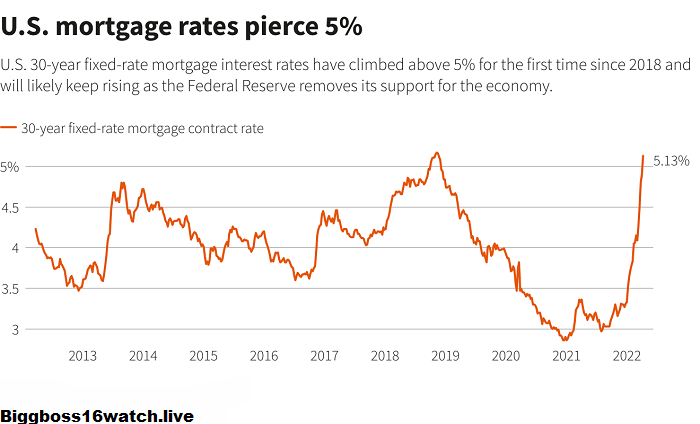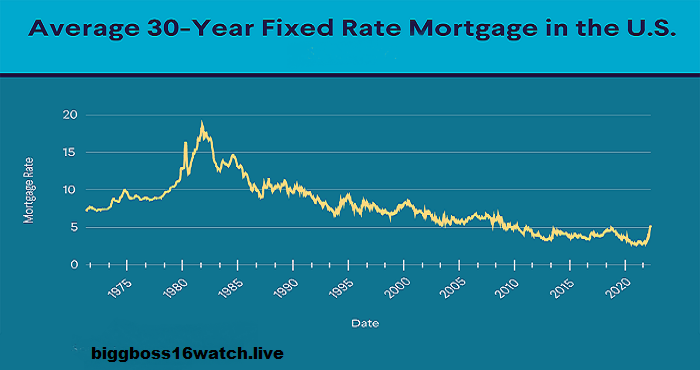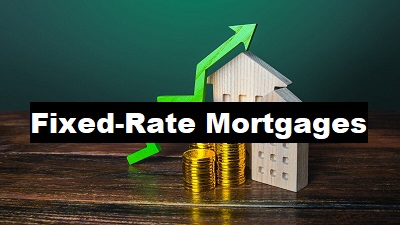A fixed-rate mortgage is a house loan with a set interest rate for the whole period. This indicates that the mortgage’s interest rate remains consistent from beginning to finish. Fixed-rate mortgages are popular among consumers who want to know how much they’ll have to pay each month. Fixed-rate mortgages can be opened or closed with set lengths of 15 or 30 years, or they can last for a period of time agreed upon between the lender and borrower.
Understanding Mortgages Fixed-Rate
Welcome to this guide on understanding how fixed-rate mortgages work. If you’re considering buying a home or refinancing your current mortgage, it’s important to understand the different types of mortgage options available to you. In this article, we will dive into the details of fixed-rate mortgages, explaining how they work and the benefits they offer. By the end, you’ll have a clear understanding of whether a fixed-rate mortgage is the right choice for you.

What is a Fixed-Rate Mortgage?
A fixed-rate mortgage, as the name suggests, is a type of home loan with an interest rate that remains unchanged for the entire term of the loan. This means that regardless of any fluctuations in the market, your interest rate and monthly payments will remain the same over the life of the loan.
One of the primary advantages of a fixed-rate mortgage is its predictability. With a fixed-rate mortgage, you know exactly how much you need to pay each month, allowing you to budget and plan your finances more effectively. This stability protects you from any potential increases in interest rates, providing peace of mind and financial security.
How Does a Fixed-Rate Mortgage Work?
Now that you have a basic understanding of what a fixed-rate mortgage is, let’s delve into the inner workings of this type of loan. Here’s a step-by-step guide on how a fixed-rate mortgage works:
1. Loan Application Process
The first step is to apply for a fixed-rate mortgage with a lender of your choice. You’ll need to provide necessary documentation such as income proof, employment history, credit score, and details about the property you’re looking to purchase or refinance. The lender will assess your application based on these factors.
2. Loan Approval and Terms
If your application is approved, the lender will provide you with an offer letter outlining the loan amount, interest rate, and terms. It’s crucial to carefully review this offer and seek clarification on any points you don’t understand. Once you accept the offer, you’ll move forward with the loan process.
3. Fixed Interest Rate Determination
The lender will determine the fixed interest rate for your mortgage loan. This rate is typically based on various factors such as your credit score, loan amount, loan term, and prevailing market conditions. It’s important to note that fixed-rate mortgages generally have slightly higher interest rates compared to adjustable-rate mortgages.
4. Calculation of Monthly Payments
With a fixed interest rate in place, your lender will calculate your monthly mortgage payments. This calculation takes into account the loan amount, interest rate, loan term, and any applicable taxes or insurance. The resulting monthly payment will remain the same throughout the loan term, making it easier for you to plan your finances.
5. Disbursement of Loan Funds
Once all the paperwork and formalities are complete, the lender will disburse the loan funds to the seller (in the case of purchasing a home) or your current lender (in the case of refinancing). This step marks the official start of your mortgage, and the fixed interest rate takes effect immediately.
6. Repayment of the Loan
Over the course of your loan term, you’ll make regular monthly payments to repay both the principal amount borrowed and the interest accrued. As mentioned earlier, these monthly payments will remain unchanged throughout the entire loan duration, providing you with stability and consistency.
Benefits of a Fixed-Rate Mortgage
Fixed-rate mortgages come with several advantages that make them a popular choice among homeowners. Here are some key benefits:
1. Predictability and Stability
One of the biggest advantages of a fixed-rate mortgage is the predictability it offers. With a fixed interest rate, you know exactly how much you’ll need to pay each month, making it easier to budget and plan your finances. This stability can be particularly beneficial for individuals and families with fixed incomes.
2. Protection from Market Fluctuations
Fixed-rate mortgages protect borrowers from any sudden increases in interest rates. Even if rates in the market rise significantly, your interest rate and monthly payments remain unchanged. This protection provides peace of mind and financial security, as you won’t have to worry about your mortgage becoming unaffordable due to rising rates.
3. Easier Financial Planning
With a fixed-rate mortgage, you can plan your long-term finances more easily. Since your monthly payments remain the same, you’ll always have a clear idea of the amount you need to allocate for your mortgage. This can make it easier to plan for other expenses and financial goals.
4. Refinancing Opportunities
If interest rates drop significantly after securing a fixed-rate mortgage, you may have the opportunity to refinance your mortgage and secure a lower rate. By refinancing, you can potentially save money on interest payments over the life of the loan. However, it’s important to carefully consider the costs and benefits of refinancing before making a decision.

Is a Fixed-Rate Mortgage Right for You?
While fixed-rate mortgages offer stability and predictability, they may not be the best choice for everyone. Here are some factors to consider when deciding if a fixed-rate mortgage is right for you:
Your Financial Situation
Consider your current financial situation and long-term goals. If you have a stable income and prefer the security of knowing exactly how much you need to pay each month, a fixed-rate mortgage can be a suitable option. However, if you expect your income to increase significantly in the near future or if you plan to sell the property within a few years, an adjustable-rate mortgage may be a better fit.
Interest Rate Trends
Keep an eye on interest rate trends in the market. If rates are historically low or expected to decrease further, it might be tempting to opt for an adjustable-rate mortgage initially, with the intention of refinancing later. However, predicting interest rate movements can be challenging, so it’s important to carefully evaluate the risks and benefits before making a decision.
Loan Term
Consider the loan term that best aligns with your financial goals. Fixed-rate mortgages typically offer loan terms ranging from 15 to 30 years. A shorter loan term will result in higher monthly payments but lower overall interest costs, while a longer loan term will result in lower monthly payments but higher overall interest costs.
Risk Tolerance
Assess your risk tolerance level. If you prefer stability and are averse to financial uncertainty, a fixed-rate mortgage is likely the better choice. On the other hand, if you’re comfortable with potential fluctuations in your monthly payments and have a higher risk tolerance, an adjustable-rate mortgage may be worth considering.
In conclusion, fixed-rate mortgages provide stability, predictability, and protection from market fluctuations. By understanding how they work and carefully considering your financial situation and future goals, you can make an informed decision on whether a fixed-rate mortgage is the right fit for you. Remember to consult with a mortgage professional who can provide personalized advice based on your specific circumstances.
We hope this guide has been helpful in explaining how fixed-rate mortgages work. Best of luck with your home buying or refinancing journey!
